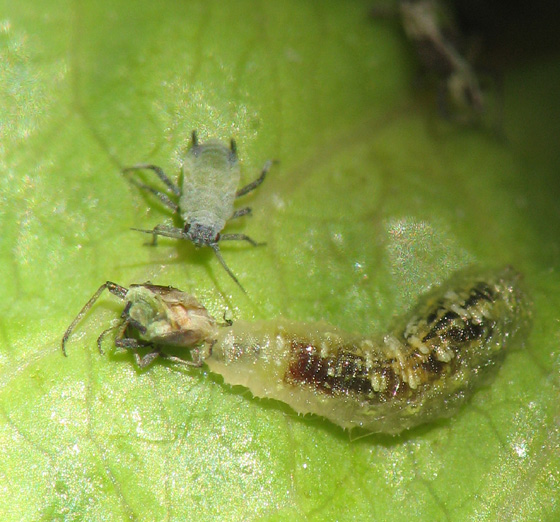Science News
Lettuce Insects
July 13, 2010

Erik Nelson is a UC Berkeley postdoc and an entomologist who is currently studying aphids on lettuce. Most people don’t want aphids on lettuce. In fact, most conventional farmers use a pesticide to get rid of them. The pesticide is put into the soil at the same time the lettuce is planted and it does a good job of keeping the aphids off.
The aphids really do no harm to the plants; farmers have simply found that people won’t purchase lettuce with the bugs on them.
Organic lettuce growers can’t use the pesticides but also need aphid-free lettuce to bring to market. Many have discovered a way to grow the lettuce and keep the population of aphids in check without chemicals. The key? Other insects.
Since Erik is an entomologist, insects are right up his alley. When he got into the bug business, he knew he wanted to do something useful, not just theoretical. Enter agriculture. As a grad student, he studied insects in cotton fields and vineyards. Now he’s leading a study in lettuce fields.
Did you know 75% of the lettuce consumed in the US is grown nearby in the Salinas Valley? That makes the commute easy for Erik.
Turns out that a certain fly, the syrphid fly (aka hover fly), loves to eat aphids when it’s in the larval stage. When the fly larva is first born, it will eat about two aphids a day. But much like the very hungry caterpillar, as it grows, it will eat more and more, upwards of 100 aphids each day.
So to get rid of one bug on the lettuce, the farmers need to attract another. Adult syrphid flies love to eat the pollen and nectar from flowers. Organic lettuce farmers only need to give up a little lettuce land for flowers to bring the flies to their fields. Hopefully, the flies will come, lay their eggs on the lettuce field and their larvae will get to work ridding the field of the aphids.
Occasionally, this biological control strategy will fail. The flies won’t come, the larvae won’t eat the aphids in time or too many aphids will disappear, leaving the fly larvae nothing to feed on. That’s where Erik comes in. He and his team are helping the farmers determine when, where and why the system works and doesn’t. As he says, “It’s just the science catching up to everyday life.” Hopefully his research will help more farmers adopt this natural pest control system.
(On a related note, today Seed Magazine begins a debate on sustainable agriculture. Check it out here.)
Creative Commons image by Beatriz Moisset